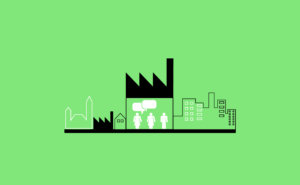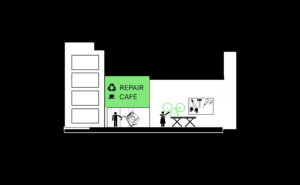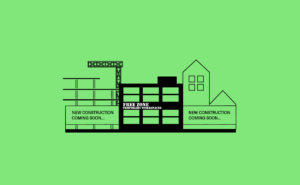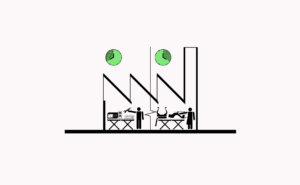
R.7 Multi-scalar Circular Infrastructure
A system of integrated infrastructure at different scales is required to manage resource flows (materials and energy) and to promote effective circular economy approaches.
[Context] Urban manufacturing could play a key role in closing the resource loop for cities. Infrastructure for circularity includes waste collection points, waste management centres and sale or distribution points. Management capacity depends on the resource type. Building materials are often best managed at a neighbourhood scale while electronics could be managed at a city scale. Some production and recycling processes must be located close to clients due to logistics costs or regulation. For example, for cement, there are legal limits in distance between production and pour (90 minutes in the EU). In general, low value bulky waste needs to be recycled/re-used within a radius of 50km while high value recovered components and materials can be traded at national and international scale. Facilitating increased R.6 Sustainable Product Cycles is also key for fostering more closed-loop approaches for materials, water and energy, which can be facilitated by manufacturers. Most of that waste could potentially be used/recovered/transformed back into raw materials through various processes.
[Problem] Resource management is often subject to a scale of action which makes it seriously complex to manage. Cities have become consumption hubs that import vast quantities of materials that cannot be produced locally, while generating large amounts of waste. While there may be public will to improve resource management efficiencies, few cities have a realistic idea of how resources move around their respective urban areas and rarely is resource supply and waste management considered in urban planning. Waste storage or treatment sites can be located far away from the source of the waste, which makes it difficult for the N.2 Re-use of Material & Energy Flows. With some materials, infrastructure is required at a local level (such as waste collection points) while in other cases it is required at the scale of the city (such as electronics waste recycling). Most cities lack adequate infrastructure across different scales that is integrated at the city/metropolitan level to optimise segregation, collection and treatment of waste streams generated by the entire urban system. This contributes to a substantial waste of resources and reduces opportunities to introduce circular loops.
[Forces] Waste produced by cities primarily includes; household, manufacturing and construction and demolition waste. The potential for re-utilisation of waste is highly dependent on maintaining the quality of the resource and avoiding cross-contamination between waste streams. A general lack of manufacturing activities in cities means that opportunities to reintroduce waste into the productive cycle are limited, especially in cities where yard spaces are limited and segregation of waste competes with other uses such as logistics. Also, at the city scale, waste infrastructure, including B.8 Space for Storage and P.6 Re-use and Repair Centres, compete with other land uses, which may have a higher commercial value. Waste management facilities are not easily integrated into the urban fabric as they may create friction with other uses (such as commercial and residential).
[Solution] Ensure that waste transfer infrastructure and material recovery plants are distributed across the city according to resource type and the most efficient scale for resource management to take advantage of local waste streams. Reusing local resources (waste), requires suitable material sorting and collection points, piping for heat networks, logistics points, online platforms to track material flows and so forth in order to create more circular industrial ecosystems. Investment mechanisms (R.10 Place-based Financial Levers) should to be considered especially in large development projects where planning regulations requires integrating circular infrastructure (N.2 Re-use of Material & Energy Flows), public investment in space, considering C.3 Balance Between Public & Private Land could help facilitate this. To maintain the quality of waste resources, N.5 Local Collection Points of Segregated Waste are essential, requiring areas/space for separate segregation, collection and treatment infrastructure. Waste management centres (C.8 Accessible Material Recovery Facilities) are increasingly being located in mixed use neighbourhoods and are compatible with industrial co-location projects if suitably designed. Where labour costs are too high to deal with R.6 Sustainable Product Cycles and where businesses do not find the challenge commercially viable, social enterprises could step in to help maintain value of products and material through disassemblage or remanufacturing.
[Contribution] Add contributions here.







